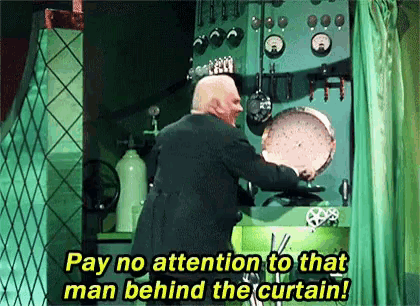There are a number of services claiming to create lessons plans for educators. Just type in your goal, and the generative-AI creates a lesson plan. But is the lesson plan worth using?

In theory, services that aim to save educators time are worth investing in, and educators spend a lot of time researching and planning lesson plans. One solution to this problem aims to address this problem by providing high-quality curriculum resources that include ready-made lesson plans along with student handouts and other resources. Another solution generates these lesson plans utilizing the high number of other lesson plans already shared on the internet as source material. The high-quality curriculum materials tend to be expensive and sometimes hard to use. The AI-generate lesson plans are quick and free, but they are also filled with a lot of nonsense.
The high-quality instructional materials solution is appealing to me because it leverages the collective expertise of thousands of total years of education experience writing and then delivering lessons from the educators who work on the curriculum. This isn’t quite putting the world’s best teachers in front of every student, but it is putting their lesson plans in front of every teacher. My experience shows though that these lesson plans are very solid, but also mostly require the experiences of those educators to come off in the ways they intended. They are hard to use because the instructional moves they demand are not well known or understood outside of a relatively small circle of educators. We created similar lesson plans but experienced a bit more success because we also facilitated workshops for educators, directly aligned to our instructional materials and leveraging our personal experience with the instructional practices embedded within them.
AI generated lesson plans tend to be pretty trashy. I’ve looked at hundreds and not found a single generated example yet that I would personally recommend or use out-of-the-box. This is in part because the inputs contain a lot of simplistic and ready to sell lesson plans and in part because the AI doesn’t have access to some critical information needed to write a good lesson plan. More on that later. These generated lesson plans contain lots of mistakes that I see early career educators make; they assume knowledge the student doesn’t have, they move too quickly, there is no deliberate selection of problems, there are limited opportunities for practice, and they lack instructional guidance on how to actually teach the content.
There’s some magic at work for sure though, when one sees a completely formed lesson plan generated within seconds that purports to help one teach a particular goal, but the shine from this magic wears off pretty quickly as soon as you begin to rub at it.

With some careful review, the AI-generated lesson plans can be improved reasonably quickly. There are many parts of the lesson plan Generative AI does a good job of creating. Given a lesson plan, it can easily and accurately figure out what types of materials would be needed, what key vocabulary is necessary for students to know, a good title for the lesson should be, and other similar metadata about the lesson. It can even generate a relatively simple script for educators to follow, which could be a helpful support for an educator who wants to see the step-by-step version of the lesson plan.
Given all this, it’s helpful to consider what might be done to improve these lesson plans, or alternatively, to consider what role generative AI should play in any lesson plan development.
What the AI doesn’t know is the context in which this lesson plan is intended to be used. It doesn’t know what the children to be taught know and don’t know. It doesn’t know what excites them and what bores them. It doesn’t know what instructional moves the educator is comfortable with. It doesn’t know how the subject matter to be taught hangs together in a deeply interconnected web of knowledge. It doesn’t know what common misconceptions children might have. It doesn’t know a lot of things!
Coincidentally, many of these things the authors of curricula materials also don’t know. The two areas where expert curricula designers do know a lot more than AI are the common misconceptions children might have and how the content in the subject area is connected together. These are critical! The things the expert curricula designers don’t know though are why high-quality instructional materials can be so hard for educators to use.
Given that knowledge of common misconceptions children may have with respect to content is specific to individual topics and not catalogued in detail for every topic, AI-generated lesson plans are doomed to fail. Given that the detailed connections between different topics is also not catalogued in detail for every topic, AI-generated lesson plans are doomed to fail. However, if one invests the time to carefully catalogue this information first, AI-generated lessons can be vastly improved.
Given that no such efforts to record and catalogue common student reasoning across an entire subject area yet exist, I’m not worried about Generative AI taking my job as a curriculum designer just yet.
(An aside: The AI-generated lesson plans are realistic enough that they can pass superficial review, so if I worked for one of those many sites where educators share their lesson plans with each other, I should be deeply worried about my site being flooded with AI-generated lesson plans.)
1 Pingback